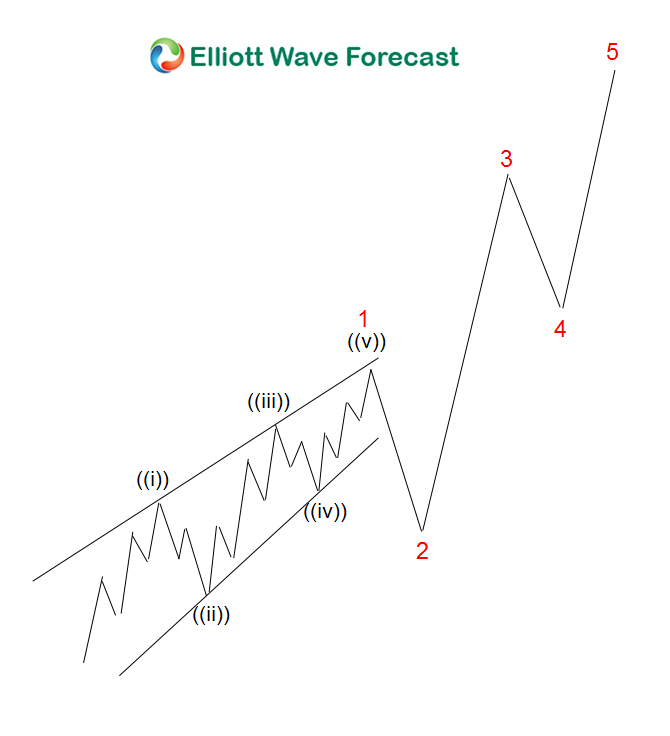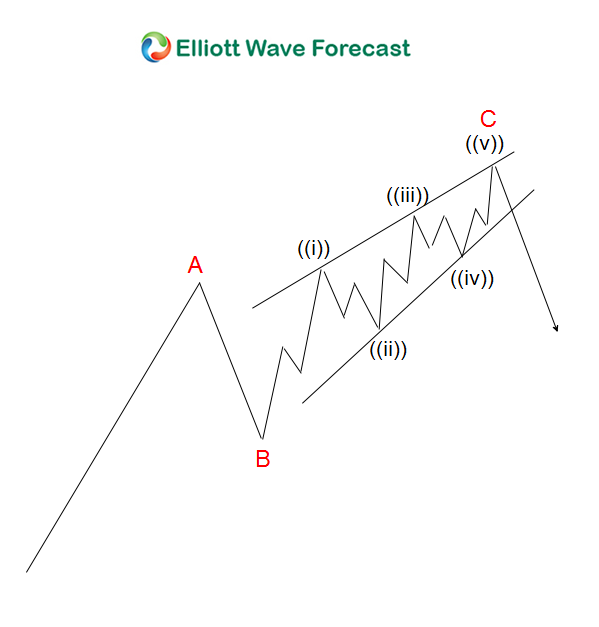The Overlap Rule in Elliott Wave Theory: A Common Misconception
One of the most misunderstood rules in Elliott Wave Theory is the overlap rule between wave 1 and 4. I have lost count how many times both members and non-members alike make a comment about our charts having an overlap between wave 1 and 4 and therefore it’s wrong. This article attempt to explain the overlap theory so that hopefully more traders understand what this rule is all about. Before we explain further though, the short answer to the question is “YES”. Overlap between wave 1 and 4 is allowed in a diagonal and it’s actually pretty common as this structure happens everywhere. Let’s take a look at the explanation below.
Fractals and the Larger Degree Wave
First of all, we need to understand what fractal means in Elliott Wave Theory. Fractal basically means that every wave is always part of a larger degree wave. Similarly, every wave can subdivide into smaller waves. Thus when you see an overlap between wave 1 and 4, the first question you need to ask is this: What’s the larger degree wave for this overlap? This overlapping 5 waves must be part of another larger degree wave due to the fractal theory. So before you quickly jump into conclusion the count is wrong, you need to answer this question first. If the larger degree wave is either wave A, or wave C, or wave 1, or wave 5, then according to Elliott Wave Theory, you can have an overlapping 5 waves, and this overlapping wave is called a diagonal.
Impulse vs. Diagonal: Key Differences
Within a 5 waves, understand there are two types: Impulse and diagonal. Impulse is what most beginner wavers understand to be 5 waves. Typically wave 3 in an impulse is the strongest and longest wave. The guideline suggests wave 3 is at least 161.8% Fibonacci extension of wave 1. Then wave 4 is a shallow pullback, typically between 23.6 – 38.2% retracement of wave 3. That’s why wave 4 most of the time does not overlap with wave 1 in an impulse. A diagonal however looks like a wedge. In a diagonal (whether leading / ending diagonal), wave 1 must overlap with wave 4. In fact, overlap is the mandatory requirement of a diagonal.
There are two types of diagonal: leading vs ending diagonal. The difference is only in the subdivision. In a leading diagonal, it’s an overlapping 5 waves in which the internal is 5-3-5-3-5. Ending diagonal on the other hand is an overlapping 5 waves in which the internal is 3-3-3-3-3. In EWF, we don’t make the distinction between leading or ending diagonal that much. Both of them however allow the overlap between wave 1 and 4.
4 Valid Scenarios for Wave 1/Wave 4 Overlaps
1. Diagonal Within Wave 1

Wave 1 Diagonal: Overlapping sub-waves ((i)) and ((iv)) are valid (5-3-5-3-5 or 3-3-3-3-3).
In the graph above, technically wave ((i)) and ((iv)) can overlap as it’s the internal of wave 1 in larger degree. The graph above shows 5-3-5-3-5 subdivision in the diagonal, but we also accept 3-3-3-3-3 subdivision.
2. Diagonal Within Wave A

Wave A Diagonal: Overlap permitted in zigzag corrections.
In the graph above, wave ((i)) and ((iv)) also can have an overlap as it’s the internal of wave A zigzag in larger degree. The graph above shows 5-3-5-3-5 subdivision in the diagonal, but we also accept 3-3-3-3-3 subdivision
3. Diagonal Within Wave 5

Wave 5 Diagonal: Often called an “ending diagonal” (3-3-3-3-3 or 5-3-5-3-5).
In the graph above, wave ((i)) and ((iv)) can have an overlap as it’s part of wave 5 in larger degree. This is what some people refer to as an ending diagonal. Again, we don’t make that distinction in EWF. The graph above shows 3-3-3-3-3 subdivision in the diagonal, but we also accept in EWF if the subdivision is 5-3-5-3-5.
4. Diagonal Within Wave C

Wave C Diagonal: Valid in corrective sequences.
In the graph above, wave ((i)) can overlap with wave ((iv)) as it’s the subdivision of wave C. It’s showing a 3-3-3-3-3 subdivision in the diagonal, but we also accept 5-3-5-3-5.
The One Exception: When Overlaps Are Invalid
With so many exceptions allowing an overlap between wave 1 and 4, when exactly is it not permitted? There’s only one case where an overlap between wave 1 and 4 is impossible: when the larger-degree wave is a wave 3. In this scenario, waves ((i)) and ((iv)) in the smaller degree cannot overlap. However, as the analysis shows, four out of five possible structures allow it, while just one prohibits it. This means overlap is not a strict rule in Elliott Wave Theory, since diagonals can form in most cases.
Back
